You can view lineage of a technical asset and trace data's origin, its transformations, and its destination after source to target mappings.
To view lineage, in the <Technical_Asset> grid, click ![]() for the required technical asset.
for the required technical asset.
The lineage of the technical asset appears.
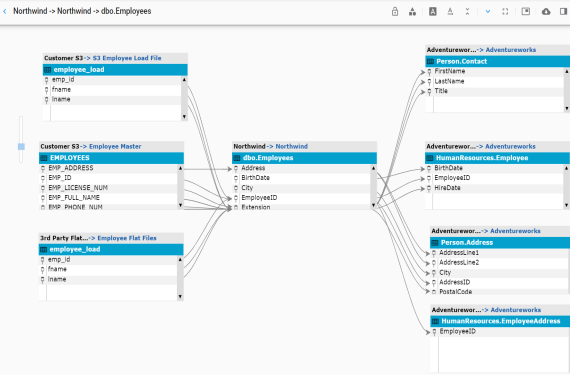
Use the following options to work on the lineage:
Use this option to view the sensitivity data indicator of assets.
Use this option to view sensitivity data classification of assets.
For example, the following lineage displays sensitive data classifications of assets as Restricted or PII.
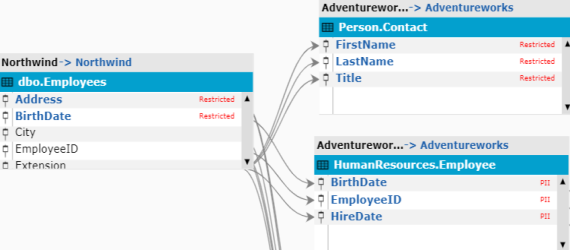
Use this option to view logical names of the assets.
For example, the following lineage displays the logical names of columns in blue color.
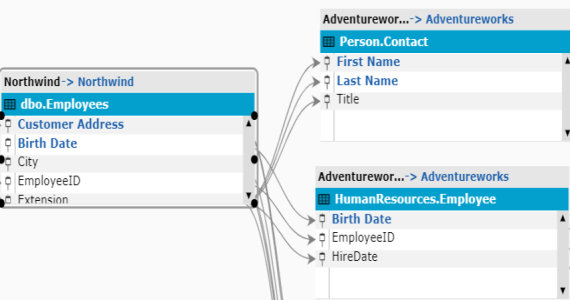
Use this option to view the expanded logical names of assets.
For example, the following lineage displays the exapanded logical names of columns in blue color.
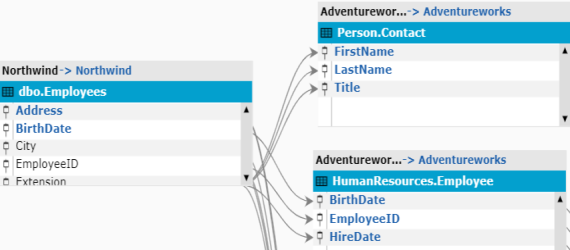
Use this to switch between detailed lineage view and overview lineage view. By default, detailed lineage view appears.
Detailed lineage view: This view is helpful to technical users like ETL developers. When you reverse engineer ETL jobs or SQL scripts, the lineage might contain temporary tables, ETL components (filters, joiners, routers etc.). This view includes technical assets that do not exist in the Metadata Manager.
For example, the following lineage displays the ETL_ROUTER and dbo.authors tables. These do not exist in the Metadata Manager.
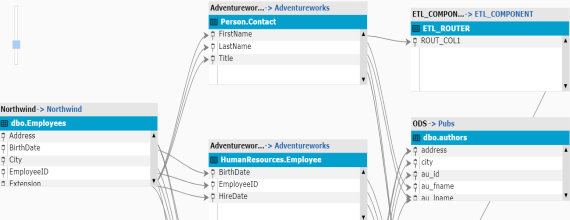
Overview lineage view: This view is helpful to business users. It excludes technical assets that do not exist in the Metadata Manager.
For example, the following lineage does not display the ETL_ROUTER and dbo.authors tables.
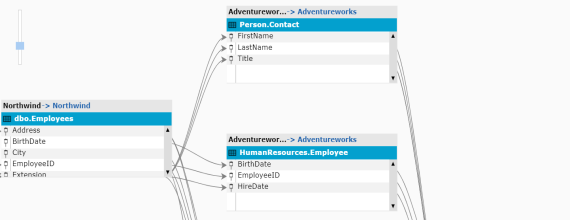
By default, lineage appears in the expanded view. Use this option to switch between the collapsed and expanded view. The expanded view includes technical assets lower in hierarchy.
For example, the following lineage displays the expanded view that includes columns.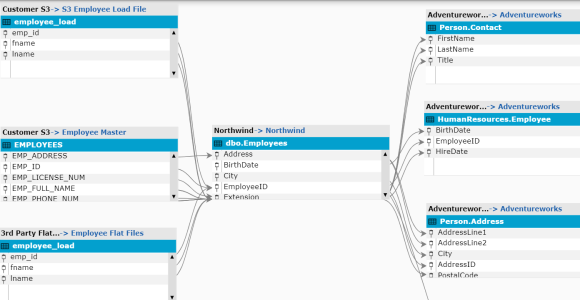
This switch is available when you are in the expanded view (![]() ). Use it to switch between Auto Expand View and Autofit view. The Auto Expand view shrinks the space for the technical assets lower in hierarchy and the Autofit view expands the space to fit the list of technical assets lower in hierarchy.
). Use it to switch between Auto Expand View and Autofit view. The Auto Expand view shrinks the space for the technical assets lower in hierarchy and the Autofit view expands the space to fit the list of technical assets lower in hierarchy.
For example, the following lineage appears in the Autofit view that expands the space for columns.
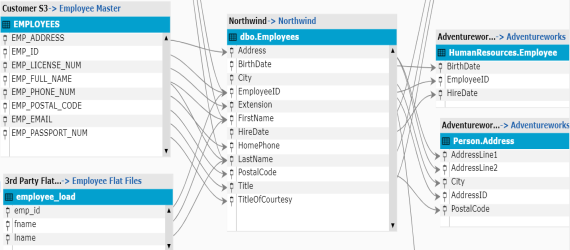
By default, the overview does not appear. Use this switch to make the overview appear or disappear. You can move the purple box in the overview to navigate across the lineage.
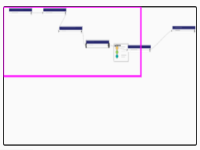
Use this option to download the lineage in the PDF, XLSX, or, JPG format.
Click a technical asset to view its properties under this pane. It has different sections for different lineage types.
System's Lineage:
- Summary: This section gives information about the number of environments acting as source, target, or both in the lineage.
- System Details: This section gives information about the selected system in the lineage.
- Environment Details: This section displays a list of environments under the selected system. The list does not include environments that are not part of lineage. You can click <Environment_Name> to view the environment's lineage.
- Extended Properties: This section displays the extended properties configured for the selected system.
Environment's Lineage
- Summary: This section gives information about the number of tables acting as source, target, or both in the lineage.
- Environment Details: This section gives information about the selected environment in the lineage.
- Table Details: This section displays a list of tables under the selected environment. The list does not include tables that are not part of lineage. You can click <Table_Name> to view the table's lineage.
- Extended Properties: This section displays the extended properties configured for the selected environment.
Table's Lineage
- Summary: This section gives information about the number of columns acting as source, target, or both in the lineage.
- Column Details: This section displays a list of columns under the selected table. The list does not include columns that are not part of lineage. You can click <Column_Name> to view the column's lineage.
- Technical: This section displays the technical properties of the selected table.
- Business: This section displays the business properties of the selected table.
- Extended Properties: This section displays the extended properties configured for the table.
Column's Lineage
- Summary: This section gives information about the number of columns acting as source, target, or both in the lineage.
- Technical: This section displays the technical properties of the selected column.
- Business: This section displays the business properties of the selected column.
- Transformation: This section displays the transformation details of the selected column.
- Valid Values: This section displays the codesets assigned to the selected column.
- Extended Properties: This section displays the extended properties configured for the selected column.
Highlighting lineage path
To highlight a lineage path with respect to a technical asset, click the technical asset in the lineage. The technical asset is highlighted in orange color, its forward lineage path appears in red, and its reverse lineage path appears in blue. The technical assets that are not part of the lineage path disappear.
For example, in the following lineage the forward lineage path of EmployeeID appears in red, and its reverse lineage path appears in blue.
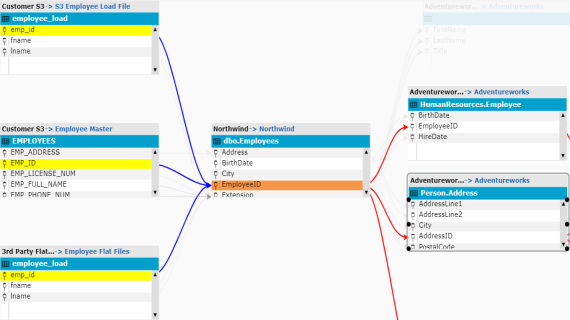
|
|
|
Copyright © 2021 erwin, Inc. All rights reserved. Copyright © 2021 Quest Software Inc. All rights reserved. All trademarks, trade names, service marks, and logos referenced herein belong to their respective companies. |